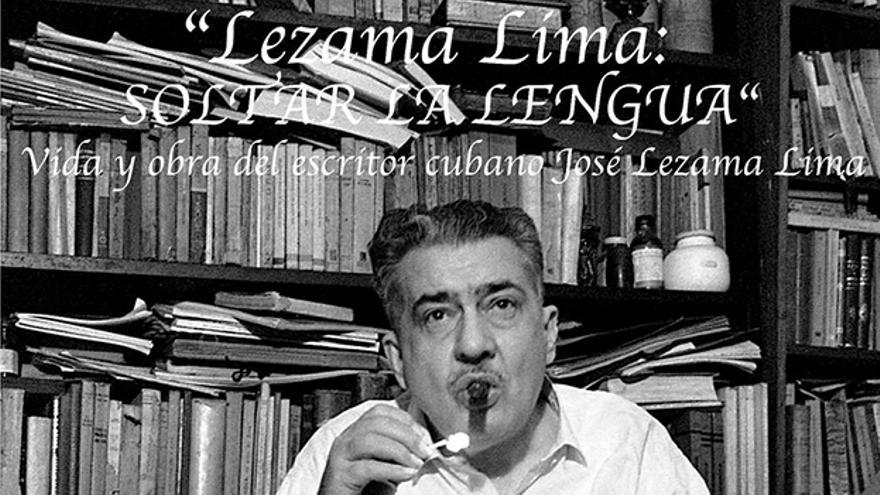
![]() 14ymedio, Xavier Carbonell, Salamanca, 21 August 2022 — In order to “stir up the anthill,” on the 45th anniversary of the death of Cuban writer José Lezama Lima (1910-1976), last Sunday the filmmaker Ernesto Fundora, at the Rosario Castellanos Bookstore of the Fund for Economic Culture, in Mexico City, screened his documentary “Lezama Lima: Soltar la Lengua” [Lezama Lima: Loosen the Tongue].
14ymedio, Xavier Carbonell, Salamanca, 21 August 2022 — In order to “stir up the anthill,” on the 45th anniversary of the death of Cuban writer José Lezama Lima (1910-1976), last Sunday the filmmaker Ernesto Fundora, at the Rosario Castellanos Bookstore of the Fund for Economic Culture, in Mexico City, screened his documentary “Lezama Lima: Soltar la Lengua” [Lezama Lima: Loosen the Tongue].
The film assembles fragments of interviews with friends and disciples of Lezama, collected by Fundora between 2009 and 2015, and finally edited in 2018. Despite the fact that the post-production of the documentary is modest and that there are excessive and almost primitive visual effects, his mind does a wonderful job in remembering the formidable author of Paradiso.
Except for images of his participation in a couple of congresses and around hundreds of photographs, very little visual material on Lezama is preserved. Hence the difficulty that we get the sense that Lezama is being offered to us as something more than a voice and a presence among books. However, Fundora succeeds in having those who knew the author evoke a Lezama who is vital, convincing, and nearby.
Just when he had published one of the essential novels of the Spanish language and was getting recognition outside Cuba, death came to him
Some of the testimonies, such as those of Cintio Vitier, Fina García Marruz, César López and Antón Arrufat, shared the friendship of the Cuban teacher since the beginning and middle of the century; in others, such as those of Manuel Pereira, José Prats Sariol, Enrico Mario Santí, Froilán Escobar and Félix Guerra, his influence and teaching during his youth was essential.
For the devotees of the “Lezama Cult,” the writer is still awaiting recognition. The 1959 cultural bureaucracy kept him in the crosshairs as “republican junk” until, after the so-called 1971 Padilla Case, he was banished from editorial and public spaces.
Just when he had published one of the essential novels of the Spanish language and was getting recognition outside Cuba, death came to him without the expected “restoration” and in almost absolute solitude.
Several young writers who accompanied him in his last days, such as Prats Sariol and Reinaldo González, recall their sadness at the empty house and the abandonment of his friends, whom State Security “recommended” not to frequent 162 Trocadero Street. He died on August 9, 1976.
During the Special Period, the movies Fresa y Chocolate and Lista de Espera recovered the Lezamian cultural imprint and were, in a way, promoters of the “liberation” of the taboo. Young people avidly sought dramas that were not only disturbing and difficult, but also marked by exclusion, such as the books by Severo Sarduy, Guillermo Cabrera Infante, and Lydia Cabrera.
The truth however, is that bureaucrats have done everything possible to bury the ‘Lezamian’ work, cancel its study and constantly define it as “hermetically sealed”
The regime and its cultural machinery then began a meticulous work of biographical rewriting, in which old colleagues such as Vitier took part, presenting Lezama as an author “of the Revolution,” an admirer of Castro and Guevara as “messiahs” of a new “imaginary era,” Latin American, according to the paradigm of Casa de las Américas, and a writer who “some officials” did not “correctly” understand.
The truth is, however, that the bureaucrats have done everything possible to bury Lezama’s work, cancel its study and constantly define it as “hermetic,” “intricate,” “incomprehensible” and “elitist.” The celebration of his centenary was mediocre and there is still no center of study named after him. His scattered and poorly organized library is inaccessible to scholars, and no Cuban publishing house has issued critical or annotated editions of Paradiso, La Cantidad Hechizada, or any of his major books.
Hence, Lezama Lima: Soltar la Lengua acquires an exceptional value as rescue and recollection. Exceptional are the last frames, which offer information and clarity about the ostracism, the false promises of rehabilitation with which the Communist Party deceived him, and the unusual conditions in which he agonized and died.
As Fundora himself states, almost half of the 28 individuals who rendered testimonies of him have died, so the film, enriched by photographs and fragments of poems, recollects the final vision of many of them about the writer.
In addition, the documentary works as an excellent initiation for those who have not read the work of José Lezama Lima and deny, through authorized voices, each of the myths with which the regime has tried to appropriate one of the greats of Cuban culture.
Translated by Norma Whiting
____________
COLLABORATE WITH OUR WORK: The 14ymedio team is committed to practicing serious journalism that reflects Cuba’s reality in all its depth. Thank you for joining us on this long journey. We invite you to continue supporting us by becoming a member of 14ymedio now. Together we can continue transforming journalism in Cuba.
